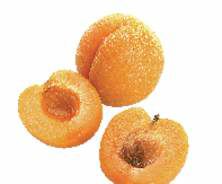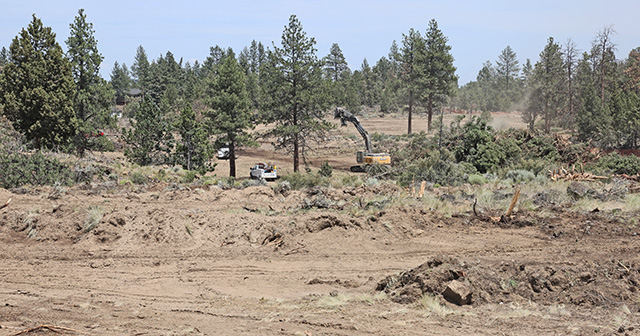Biblical apple really an apricot?
Published 4:00 am Tuesday, December 25, 2012

- That notorious apple in the Garden of Eden may actually have been an apricot, author John Musselman theorizes.
Last year I read that a lecture was being given at the Oregon Garden on plants of the Bible and the Quran. The lecture was based on a book titled “Figs, Dates, Laurel and Myrrh,” by Lytton John Musselman, a botanist with years of experience in the Middle East. I wasn’t able to attend the lecture, so the next best thing was to order the book.
In the forward, Garrison Keillor writes of memories of his Bible picture books from his childhood. The Holy Land was pictured as an arid plain with some mountains in the distance and men in turbans and robes riding camels towards an oasis of palm trees.
Like most of us growing up, our faith was an indoor faith; learning about the gardens and farms and crops of the Bible or Quran was lost to most of us. As Keillor stated, “The church was more of a fortress than a garden.”
My bubble really burst when I read that the famous apple of Adam and Eve fame was probably an apricot.
Would Musselman be considered a heretic for writing that he believes the apple was actually an apricot? The translators of the influential King James version of the Bible had little firsthand knowledge of plants of the Middle East, writes Musselman.
Musselman states his apple to apricot theory partially by tracing back the Hebrew word for apple, tappooakh. He found the word to mean “fragrant,” a description that would include other fruits such as the apricot.
The apple is not mentioned in Genesis, and except for verses in Joel and Proverbs, the only other reference to the apple is in the Song of Solomon.
Apricots can survive less rainfall and hotter temperatures than apples, and they are fragrant — evidence that the apple tree of the Bible could, in fact, have been an apricot tree.
The apple was introduced to the Middle East long ago and remains a popular fruit in the region. However, cultivation is limited to areas with adequate water and moderate temperatures.
Somehow the idea or mental picture of Eve offering Adam an apricot just doesn’t seem right; but then, how can we argue with a 20-year research project?
The common fig, Ficus carica, is the most widely planted fruit tree in biblical lands. The trees live for up to 200 years, so they are often planted with olive trees, which are also long-lived. The fig in both the Bible and the Quran is associated with the themes of testimony and judgment.
The fig is the last tree in the Middle East to produce leaves in the spring. While the leaves of almond and other deciduous trees are fully developed, the fig is just beginning to leaf out.
The best known fig leaves may be those sewn together to cover the nakedness of Adam and Eve.
After reading the very complicated process of fig pollination, I have new respect for the fig snack bars I buy from Trader Joe’s.
The flowers are so insignificant that even the growers may not see them. Add to that the barely discernible minute wasp that deposits eggs in the flowers, the development of wasps and fertilization within the flower, and you learn why the process is among the wonders of nature.
Thankfully, modern varieties of fig trees can produce delicious fruit independent of wasp pollination and may produce several crops in one year.
It being the Christmas season, I decided to reread the chapters on frankincense and myrrh, two of the gifts the Magi brought to the Christ child.
Frankincense is prepared from the gum of several species of Boswellia trees and shrubs in the Arabian Peninsula and North Africa.
Incense is obtained from the gummy resin that drains from cuts made in the tree. The resin dries from its milky state into translucent, amber-colored, hard drops that are harvested several weeks after oozing to the surface of the plant.
Musselman writes that the burning incense reminds him of pine resin. Frankincense is not mentioned in the Quran, but is mentioned about 140 times in the Bible as the holy incense required for worship in the Old Testament.
Myrrh is the dried resin of several species of Commiphora and is also exuded from cuts in the bark of the tree.
All species are not used for their exceptional fragrance: some are used medicinally, which was noted in a New Testament reference in Mark to adding the myrrh to wine offered to Jesus prior to the crucifixion, which he refused to drink.
The pages of Solomon’s writings are filled with myrrh being used as a personal perfume and it “is discussed with erotic overtones. With a trail of fragrance throughout the Bible, myrrh is cited as one of the most desirable fragrances.”
The book is a wonderful reference to the agriculture mentioned in the Bible. No plant is mentioned more times in the Bible than the grapevine and its products, chiefly wine (200 times), grapes (50 times), raisins, syrup and vinegar. In contrast, the Quran has only eight references to grapes.
A total of 80 crops are mentioned — giving an insight into the vegetables, grains and various woods of the area and their use. Some discredit the old Bible stories, while at the same time helping us understand some of the symbolism in ancient mosaics and art of the areas.







